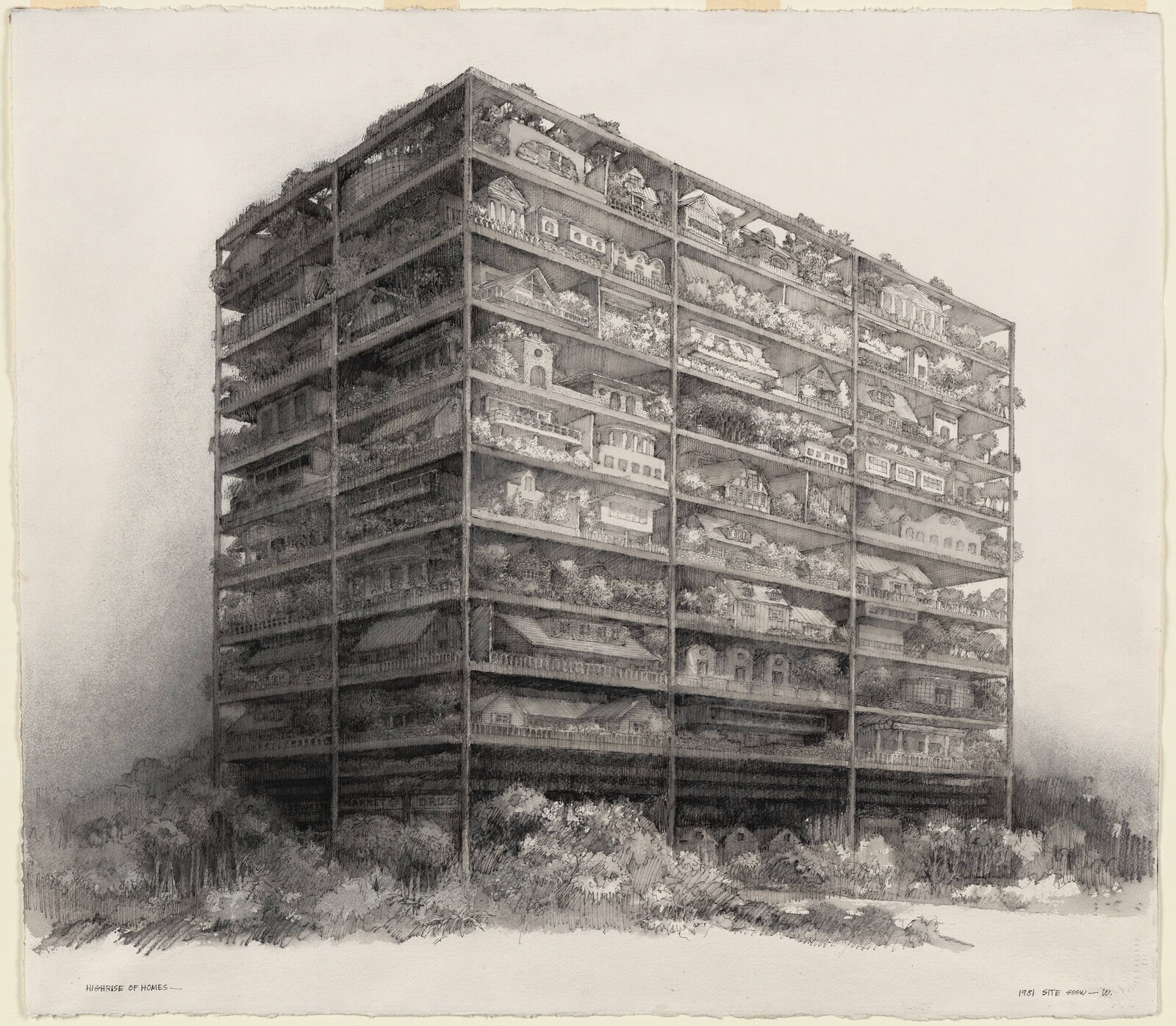11 West 53rd Street
New York, NY 10019
USA
T +1 212 708 9400
The new research institute, established with a USD 10M gift from the Legacy Emilio Ambasz Foundation, will be dedicated to understanding the interaction between architecture and ecology in order to highlight the urgent need for an ecological transformation. The goals of the Institute, through a range of curatorial programs and research initiatives, are to foster dialogue, promote conversation, and facilitate research around the relationship between the built and the natural environment. The Ambasz Institute will focus in particular on digital initiatives in order to both advance a global conversation on this crucial issue and to ensure that the Institute reaches a diverse audience. The Institute, to be located on MoMA’s Midtown Manhattan campus within the Department of Architecture and Design, will specifically study creative approaches to design at all scales of the built environment–buildings, cities, landscapes, and objects–in order to work toward an ecological future and environmental justice.
“Issues of ecology and the ongoing climate crisis are the most urgent challenges of our time, not only for architecture, but for humanity as a whole,” said Martino Stierli, The Philip Johnson Chief Curator of Architecture and Design at The Museum of Modern Art. “I am thrilled that with the new Ambasz Institute at MoMA, the Department of Architecture and Design will be uniquely positioned to shape discourse and foster necessary change in the field of design toward a more equitable and ecological future.” A Director of the Institute will be named after a search process.
The establishment of the Ambasz Institute offers an important opportunity for MoMA to continue its global leadership on sustainability issues while celebrating and cultivating a deeper public understanding of architecture and design. Research opportunities and a variety of programs including public lectures, conferences and symposia, many of them online, will bring together and prompt conversations amongst architects, designers, policy makers, social thinkers, historians, and the general public.
Within the next few years, the Museum will organize and present a major exhibition focused on the emergence of green architecture. An international search for the Institute’s inaugural Director will be launched shortly.
Emilio Ambasz’s deep-rooted relationship with The Museum of Modern Art spans more than five decades. As Curator of Design in the Museum’s Department of Architecture and Design from 1969 to 1976, he organized several groundbreaking exhibitions, including Italy: The New Domestic Landscape (1972); The Architecture of Luis Barragan (1974); and The Taxi Project: Realistic Solutions for Today (1976). As a pioneering industrial designer and architect, Mr. Ambasz is also represented through more than 20 works in the Museum’s collection. Prior to the major gift to establish The Emilio Ambasz Institute at MoMA: For the Joint Study of the Built and the Natural Environment, both MoMA and MoMA PS1 have benefitted from Mr. Ambasz’s sustained patronage for more than forty years.
Ambasz has often stated: “The Western notion of Man’s creations as distinct and separate entities—in contrast with Nature—has exhausted its intellectual and ethical capital. An emerging man-made garden is overtaking the one we were originally given. We need to conceive of an architecture that stands as the embodiment of a pact of reconciliation between nature and building. We must create alternative models of the future proposing a better life to guide our actions if we do not wish to perpetuate present conditions. I believe that any architectural project not attempting to propose better modes of existence is unethical. This task may stagger the imagination and paralyze hope, but we cannot subtract ourselves from its pursuit.”



